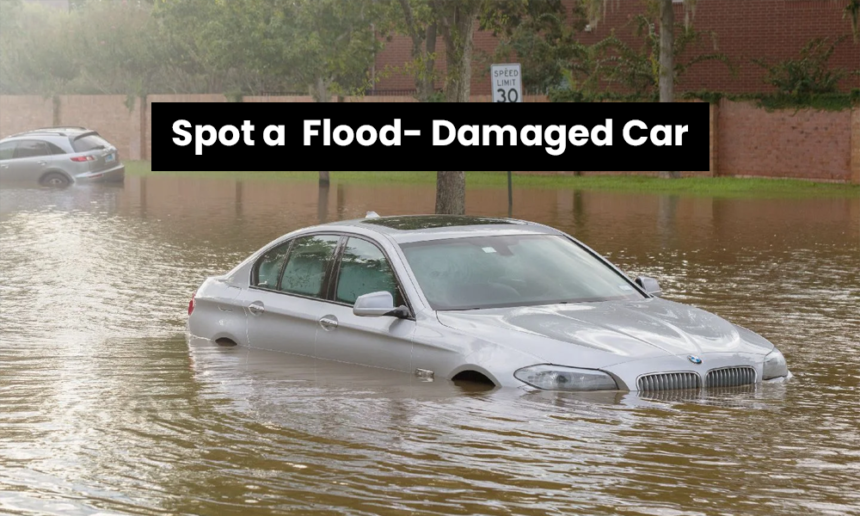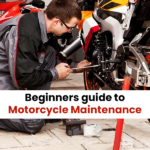“An ounce of prevention is worth a pound of cure.” This old adage rings true when it comes to buying a used car, especially in flood-prone areas. Flooding can wreak havoc on vehicles, leaving them with hidden damages that might not be immediately apparent. As a prospective buyer, it’s crucial to be vigilant and thorough in your inspection to avoid ending up with a car that’s been through a watery ordeal. In this comprehensive guide, we’ll delve into the telltale signs of a flood-damaged car, equipping you with the knowledge to make an informed decision and steer clear of potential headaches down the road.
The Grim Reality of Floods in India
Floods are an unfortunate reality in many parts of India, and their impact extends far beyond the immediate devastation. From bustling metropolitan cities to rural areas, these natural calamities leave a trail of destruction in their wake, affecting both natural and man-made structures. One of the casualties often overlooked is the cars that become submerged in the floodwaters.
While the initial sight of a flooded car might evoke sympathy, the real challenge arises when these vehicles find their way back into the market, disguised as perfectly fine used cars. It’s a trap that unsuspecting buyers can easily fall into, leading to costly repairs and potential safety hazards down the line.
The Hidden Dangers of Flood-Damaged Cars
The aftermath of a flood can be deceiving. A car that has been submerged in water might look perfectly fine on the surface, but the underlying damage can be extensive and insidious. Water can seep into the most unexpected nooks and crannies, causing corrosion, electrical malfunctions, and even compromising the structural integrity of the vehicle.
Driving a flood-damaged car can be a risky endeavor. The damage sustained might not be immediately apparent, but it can manifest in unexpected ways, putting your safety and that of others on the road at risk. It’s a gamble that’s simply not worth taking, especially when there are ways to identify these vehicles before committing to a purchase.
Top 8 Ways to Spot a Flood-Damaged Car
When it comes to spotting a flood-damaged car, a keen eye and a thorough inspection are your best allies. Here are eight tried-and-true methods to help you identify a waterlogged vehicle before it’s too late:

1. The Nose Knows: Perform the Smell Test
Your sense of smell can be a powerful tool in detecting a flood-damaged car. A damp, musty odor lingering in the interior is a surefire sign that the car has been through a watery ordeal. Mold and decay formation are clear indicators that the vehicle has been sitting in water for an extended period.
However, sellers might try to mask these telltale scents with potent air fresheners. If you can’t detect any unpleasant odors due to the overwhelming fragrance, be wary – it could be a cover-up for something more sinister.
2. The Touch Test: Feel Around for Dampness
Sometimes, water can collect in areas that aren’t immediately visible. Touching and feeling around the car can reveal hidden pockets of moisture and dampness. Pat the floor carpets and peel them back to inspect the area between the carpet and the metal structure. Rust and water stains in these areas are clear indicators of flood damage.
Don’t forget to check the spare tire compartment, where water can easily accumulate under the rubber material. Even the seatbelts can harbor water stains and discoloration if they’ve been submerged.
3. The Corrosion Chronicles: Spot the Telltale Signs
Rust and corrosion are the silent enemies of flood-damaged cars. Inspect the metal components, both exterior and interior, for signs of decay. Even if the car appears dry on the surface, corrosion will continue to eat away at the metal parts, leaving a trail of evidence.
Look for rust on screws, door hinges, hood springs, trunk latches, and anywhere metal components are exposed. Open the doors and inspect the areas where they meet the body for signs of corrosion in the corners and bottoms. Check under the seats for rusted springs and the main cabin for decayed metals.
If you notice bubbles or blisters in the paint near rubber or chrome trim, it could signify rust lurking beneath the fresh coat of paint.
4. The Fabric Factor: Inspect Upholstery and Carpets
The fabric and upholstery of a car can be a treasure trove of clues when it comes to detecting flood damage. Carefully inspect the back and underside of seats, as well as the carpeting, for water stains or discoloration.
If the upholstery or carpeting appears new or mismatched in certain areas, it could be a sign that water-damaged components have been replaced to conceal the truth. Be wary of cars with inconsistent fabric patterns or colors – they may be hiding a soggy secret.
5. The Road Test: Take it for a Spin
A test drive is an essential part of any used car inspection, and it can reveal a wealth of information about potential flood damage. Before you even start the engine, listen for any unusual noises or cranking sounds, and watch out for smoke or unusual odors.
During the test drive, pay close attention to the electrical components. Bend down under the dashboard and gently twist the electrical wires – if they feel brittle, it could be a sign of water damage. Test all the dashboard lights, headlights, turn signals, emergency blinkers, air conditioning, wipers, and radio. Any malfunctions or static could be indicative of water-related issues.
Also Read: 10 Simple DIY Car Maintenance Tips to Keep Your Vehicle in Top Shape
6. The Water Line: Look for Telltale Marks and Hazy Surfaces
Water has a way of leaving its mark, both literally and figuratively. Look for water lines or discoloration on the doors, trunk, and other areas that could indicate how high the water level reached during a flood.
Additionally, inspect the lamps, headlights, taillights, instrument panels, and interior and exterior surfaces for any hazy or cloudy appearance. This could signify moisture trapped inside these components, which can lead to further damage if left unchecked.
7. The Debris Trail: Check for Remnants of Nature’s Fury
Floodwaters often carry with them debris, such as grass, dirt, and other natural materials. Even after a car has been cleaned, these remnants can linger in hard-to-reach areas like the glove compartment, engine crevices, trunk, under the spare tire, dashboard, below seats and seating tracks, wheel wells, and around wiring.
If you spot any of these telltale signs of debris, it’s a strong indication that the car has been submerged in floodwaters for an extended period.
8. The Expert Eye: Consult a Professional
If, after your thorough inspection, you’re still unsure about the condition of the car, it’s always best to consult a professional. An experienced mechanic or automotive expert will know exactly where to look for flood damage remnants, including in the alternator, wiring mechanisms, and other critical components.
They can also perform more in-depth checks, such as removing the wheels to inspect the brakes and wheel components for signs of water and debris infiltration.
The Aftermath: Dealing with a Flood-Damaged Vehicle
If you find yourself in the unfortunate situation of owning a car that has been damaged by flooding or waterlogging, it’s crucial to act swiftly and with caution. Avoid starting the engine if there’s a possibility that water has reached the engine, as this can lead to severe damage known as hydro-locking.
Water and accumulated dirt can also wreak havoc on a car’s electrical systems, so it’s essential to have these components thoroughly inspected and repaired if necessary. Additionally, check with your car insurance provider to understand what damages are covered and what steps you need to take to file a claim.
In some cases, the extent of the damage may be severe enough to render the car irreparable. However, some flood-damaged vehicles are partially repaired and then sold to unsuspecting buyers. This is why it’s crucial to be vigilant and conduct a thorough inspection before making a used car purchase.
Beyond the Checklist: Additional Tips for Savvy Car Buyers
- Obtain the car’s history report: This report can reveal valuable information about the car’s past, including any recorded flood damage.
- Be wary of private sellers who seem overly eager to sell: If a seller is pressuring you to buy the car quickly or offering it at a significantly lower price than similar models, it could be a sign that they are trying to hide something.
- Trust your gut instinct: If something feels off about the car or the seller, walk away. It’s always
The Bottom Line: An Ounce of Prevention
Buying a used car can be a daunting task, especially in areas prone to flooding. However, by arming yourself with the knowledge of how to spot a flood-damaged vehicle, you can avoid costly mistakes and ensure a safe and reliable purchase.
Remember, an ounce of prevention is worth a pound of cure. Taking the time to thoroughly inspect a used car for signs of flood damage can save you from a world of headaches and expenses down the road. Trust your senses, be meticulous in your inspection, and don’t hesitate to seek professional help when needed.
So, by being vigilant and taking the necessary precautions, you can navigate the used car market with confidence and drive away with a reliable vehicle that will serve you well for years to come.
FAQs
1: Can a flood-damaged car be fully repaired?
It is possible to repair some flood damage on a vehicle, but the extent of repairs needed depends on how long the car was submerged and the level of flooding. The longer a car sits in water, the more components are likely to be impaired. Engines, transmissions, electronics, and other major systems can suffer severe corrosion and performance issues if saturated for too long. While superficial water damage may be fixable, it’s very expensive to fully remediate a car that was deeply flooded.
2: Is it illegal to sell a flood-damaged car without disclosing it?
Yes, in most areas it is considered an unlawful deceptive practice and form of fraud to knowingly sell a flood-damaged vehicle without disclosing this to the buyer. Sellers are legally obligated to report honesty about a vehicle’s historical exposure to flooding when asked. Auto dealers and private sellers who misrepresent a flooded car’s history can face penalties including fines, license suspension, lawsuits and even criminal charges.
3: What problems do cars typically develop after flood exposure?
Some of the most common issues that plague previously flooded cars include: engine failure from water ingestion, transmission problems, electrical shorts and sensor failure, brittle/cracked wiring, corrosion on metal components, computer module failure, mold/mildew smells and other water contamination problems. Even hidden long-term issues like structural rust can manifest down the road.
4: How can I check if a used car has a branded flood-damaged title?
One of the best ways to check if a used vehicle has suffered significant past flood damage is to get a vehicle history report from a reputable online provider like CARFAX or AutoCheck. These companies collect public records on cars including any “flood”, “salvage” or other branded titles issued after an insurer declared it a total loss due to flooding. However, these reports don’t catch every flooded car, so a careful inspection is still advisable.
5: Do auto insurance policies cover costs to repair flood damage?
Most standard auto insurance policies will provide coverage for flood damage repairs if you have comprehensive coverage. Comprehensive covers environmental hazards like flooding in addition to other risks like fire, theft, vandalism or colliding with an animal. The coverage allows for repairs or total loss replacement up to the insured value of the vehicle after the deductible is paid. But policies may exclude flood coverage in known high-risk flood zones.







